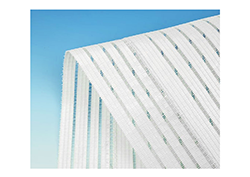What is a Greenhouse Screen System?
A Greenhouse Screen System is an integrated setup of screens or curtains within a greenhouse that can be adjusted to control light, temperature, and humidity. These screens are typically made from various materials, such as aluminized polyester, polyethylene, or other specialized fabrics, and are installed on the roof and walls of the greenhouse. The primary function of these systems is to create an optimal microclimate for plant growth, which is crucial for maximizing yield and reducing energy consumption.
Types of Greenhouse Screens
Shade Screens: These are used to reduce the intensity of sunlight entering the greenhouse, protecting plants from excessive heat and light stress. Shade screens can be fixed or retractable, offering flexibility in managing light levels throughout the day.
Thermal Screens: Designed to conserve heat, thermal screens help maintain a stable temperature inside the greenhouse, reducing the need for additional heating. This is especially beneficial during colder months or in regions with significant temperature fluctuations.
Energy Screens: These are a combination of shade and thermal screens, aimed at both reducing light intensity and conserving energy. They are often used in high-tech greenhouses where precise climate control is essential.
Blackout Screens: Used to block all light, these screens are crucial for photoperiod-sensitive plants that require specific light and dark cycles to flower or fruit.
Benefits of the Greenhouse Screen System
Improved Crop Quality and Yield
By providing optimal growing conditions, the Greenhouse Screen System ensures that plants receive the right amount of light, heat, and humidity. This not only enhances the quality of the crops but also increases their yield. For instance, tomatoes, cucumbers, and other greenhouse-grown vegetables have shown significant improvements in both size and taste when grown under controlled conditions.
Energy Efficiency
One of the most significant advantages of using a Greenhouse Screen System is the reduction in energy consumption. By managing the internal climate effectively, these systems minimize the need for artificial heating and cooling. This leads to substantial energy savings and reduces the carbon footprint of the greenhouse operation.
Water Conservation
Greenhouse Screen Systems help in maintaining consistent humidity levels, which reduces the need for frequent watering. This is particularly important in areas facing water scarcity. Moreover, the screens can help in reducing evaporation, Fertigation Systems ensuring that water used for irrigation is utilized more efficiently.
Pest and Disease Control
Maintaining a controlled environment within the greenhouse also helps in reducing the incidence of pests and diseases. The screens can act as physical barriers, preventing pests from entering the greenhouse. Additionally, the optimal growing conditions make plants healthier and more resilient to diseases.
Extended Growing Seasons
With the ability to control temperature and light, growers can extend the growing seasons of their crops. This allows for year-round production, providing a continuous supply of fresh produce regardless of external weather conditions.





Comments